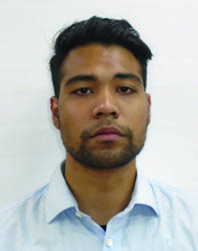


On April 30, 2021, the Internal Revenue Service released early drafts of the new Schedules K-2 and K-3 for Forms 1065, 1120-S, and 8865 for tax year 2021. Why did the IRS feel the need to release these new forms, and what do they mean for taxpayers and preparers? To get answers to those questions and others, we convened a group of experts from Orion Innovation: Lokesh Sivasriaumphai, project manager; Nitin Lohia, senior business analyst; and Swati Betkekar, senior business analyst. Michael Levin-Epstein, Tax Executive’s senior editor, moderated the discussion.
Michael Levin-Epstein: As you know, in April 2021, the IRS released early drafts of the new Schedules K-2 and K-3 for Forms 1065, 1120-S, and 8865 for tax year 2021. What are the new K-2s and K-3s, and why did the IRS feel the need to require them now?
Lokesh Sivasriaumphai: So, Schedules K-2 and K-3 are essentially extensions to Forms 1065, 1120-S, and 8865, which report items of international tax relevance. The importance here is that it replaces Line 16A-R, portions of Line 20, and numerous unformatted statements attached to prior versions of Schedule K. According to the IRS, the schedules are designated to provide greater clarity for partners and shareholders on how to compute their US income tax liability with respect to items of international tax relevance, including deductions and credits. Prior versions of Schedules K and K-1 did not require any specific format to provide international information, resulting in what could be a confusing array of statements attached to Schedules K and K-1. The new Schedules K-2 and K-3 provide greater clarity and consistency when helping partners and shareholders comply with filing and reporting obligations. Th
Nitin Lohia, senior business analystis greater certainty enables the IRS to verify that partnerships and S corporation items are properly reported on the partners’ and shareholders’ returns. In terms of the impact on the IRS, this should reduce the burden for them in terms of inquiries with regard to items of international tax relevance. And for the taxpayers, the benefit will be, of course, the increase in the visibility and as well the comprehensiveness of their reporting in terms of international tax items, as well as in consistency in reporting for partnership and S corporation items.
Taxpayers & Preparers Most Affected
Levin-Epstein: Which taxpayers or preparers are most impacted by the new K-2s and K-3s?
Sivasriaumphai: I believe that taxpayers that are most impacted by the new Schedules K-2 and K-3 are obviously those with income from international sources, as they’ll need to report the same in their US income tax returns. If we look at this from a preparer’s perspective, the preparers that are most affected are those who have to prepare flow-through entities with items of international tax relevance, which is essentially preparers who prepare Forms 1065, 1120-S, and 8865, as now they’re required to complete and submit Schedules K-2 and K-3 as well as provide Schedule K-3 to each partner so that, on a partner level, they can report the same on their individual filing. Now, I will hand it over to Nitin to discuss the specifics of the K-2 and K-3 impact.
Nitin Lohia: Normally, the new schedules must be filed by all pass-through entities with items of international tax relevance. It would include foreign partners and international activities. However, pass-through entities which do not have any international tax items to report do not have to file the schedules, that is, K-2 and K-3. So, items of international tax relevance include information [pertaining to] partners and shareholders needed to determine their foreign tax credits [related to] income or loss by source and separate category of income, IRC Section 250 deductions with respect to foreign-derived intangible income (that is, FDII), and inclusions of subpart F income and global intangible low-taxed income (also known as GILTI), and the last point is distributions from a foreign corporation that are treated as dividends or excluded from gross income, because they’re attributable to previously taxed earnings and profits (PTEP).
Benefits to Taxpayers & Preparers
Levin-Epstein: What benefits do the new forms provide for taxpayers and preparers?
Sivasriaumphai: So, with the new introduction of Schedules K-2 and K-3, there are definitely benefits as well as additional complexities for taxpayers and preparers that have come up. From a taxpayer’s perspective, the advantage is, of course, the increased transparency, as mentioned in the first question. Another thing the IRS brought out which is very beneficial for taxpayers is taxpayers who make a good-faith effort to comply with the new schedules for tax year 2021 will no longer be assessed a penalty. And according to the notice, a filer will no longer be concerned with penalties if it made a good-faith effort to decide whether or not to file and how to complete a part if it determines it must file. In terms of disadvantages from a taxpayer perspective, although most, if no longer all, of the records that [might pertain to] Schedule K-2s and K-3s are already required to be provided to the partners, more detailed responses will be necessary for much of this information available than at present. Now I will turn it over to Nitin to speak a bit about how these new Schedule K-2s and K-3s will affect preparers.
Lohia: So, we also have few advantages for preparers. After the introduction of K-2 and K-3, the new forms will reduce the uncertainty about what to report and how to report it, which we were facing previously with K-1. Also, as the tax preparers use a number of software [programs] to prepare to put together and distribute the Schedule K-1s to partners, tax preparers will leverage all the software [even as they still] need to manually accumulate the specific information required for inputting into the system. As many tax preparers understand from their experiences regarding the standardization of work papers and tax return automation, the introduction of such procedures takes time and resources. Having consistent and standardized forms and instructions will help partners, as well as partnership shareholders and S corporations, to comply with various tax laws and the complexities which they were facing previously, and it would help them to file them in an efficient manner. With that being said, we also have a few disadvantages for tax preparers. As preparers are only [now] engaging with Schedules K-2 and K-3, there are bound to be transition costs for partnerships and S corporations to comply with the new information requirements when first engaging in this process. Because they were already in line to file their returns in a particular format, the new inclusion of K-2 and K-3 made additional complexities for preparers to understand the new laws and requirements that are needed to be captured and apply [them when] reporting the same.
Difficulties & Challenges for Taxpayers & Preparers
Levin-Epstein: What are you finding in terms of difficulties that taxpayers and preparers are having with these new forms?
Sivasriaumphai: Some difficulties taxpayers and preparers face when completing the new form is that partnerships and S corporations may not have previously reported information in as much detail and for every fact pattern. As such, the information that is now required on Schedules K-2 and K-3 was never captured before, and new processes will need to be put in place to capture them. The new schedules definitely require more detailed and complete reporting than partnerships and S corporations have been previously reporting; however, it’s necessary for partners and shareholders to accurately complete their own returns as well using the new Schedules K-2 and K-3. As the process of gathering information can be daunting for preparers to complete Schedules K-2 and K-3, that’s definitely one of the disadvantages. As for the taxpayer, the process of applying their Schedule K-3 information, also known as their partners’ distributive share of items of international tax relevance, to their US tax income can also be a complex task. I’ll now hand it over to Nitin to expand on some more of the difficulties.
Lohia: Even in many instances, a partnership or an S corporation with no foreign partners or foreign-source income, no assets generating foreign-source income, and no foreign taxes paid or accrued may still need to report information on Schedules K-2 and K-3. For example, a partner or a shareholder claims the foreign tax credit, the partner generally needs certain information from the partnership on Schedule K-3, part 2 and part 3, to complete Form 1116. So, this information should have been reported in prior years, including before the TCJA, or the Tax Cuts and Jobs Act, on Schedules K and K-1. This information the partner or shareholder needs to compute the foreign tax credit limitation, which determines the amount of foreign tax credit available to the partner or shareholder.
Levin-Epstein: What options do preparers have when addressing the compliance complexities arising from the new changes?
Swati Betkekar: Some options which preparers have in addressing these compliance complexities (which come about because of the new changes) could be engaging in peer discussions and panel discussions and attending conferences on tax topics with their fellow professionals to troubleshoot any doubts they have on reporting certain items. Apart from that, preparers can also leverage existing K-1 data, such as PFIC 1291 or details collected from underlying investments to automate filling out certain parts of Schedules K-2 and K-3.
Technology
Levin-Epstein: How can technology help meet the needs of preparers when gathering data to complete these new forms?
Betkekar: Technology can help meet the needs of preparers when they are gathering data to complete these new forms by offering preparers an intuitive platform alternative to traditional fragmented systems which are currently being used. Through a platform approach, preparers will be able to establish process adjacency and gain synergetic efficiencies throughout their entire preparation life cycle to maximize overall filing success. If we look at Schedules K-2 and K-3 specifically, computation processes such as calculating the partners’ distributed share of items of international tax relevance can be automated using technology. Technology can help automate, standardize, and reduce the time spent on the calculation process from preparers. Existing data from the K-1 forms that have already been prepared can also be reused and leveraged to avoid the rework of inputting the same information required on Schedules K-2 and K-3. Preparers can reduce the reporting discrepancy caused by manual input errors by using systems that automate and create checks and balances to call out any preparer errors when values do not reconcile.
Another benefit we could bring to the forefront is simplifying the K-1 package and form generation. Generating a K-1 package to share with partners to update and verify new information is another factor that technology can help with in terms of preparers gathering data, as it can be an arduous process. Creating something like a client portal makes for a more seamless and efficient way for clients to update information and provide it to their tax preparers. Finally, we would say having a kind of platform in order to help through this process helps the tax preparer to easily ingest various forms of data which they receive from clients and bring it into a standardized system for them to be able to easily prepare the returns. In fact, one of our clients, EisnerAmper, is at the forefront of tax and technology and was an early adopter of technology, investing in a sophisticated partnership allocation tax platform.



